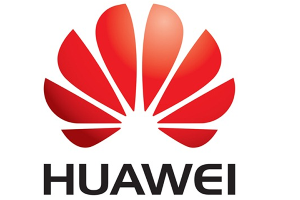Huawei and Abraxas have successfully built a virtualised multi-tenant cloud data centre network with Huawei’s Cloud Fabric Data Centre Network Solution.
Using Huawei’s SDN-ready Cloud Fabric architecture and fully virtualised data centre network solution, Abraxas has significantly improved its ICT resource utilisation. Huawei’s Cloud Fabric helps Abraxas provide highly efficient, flexible, and reliable cloud computing services for enterprises, government agencies, and scientific research institutions in Switzerland and in Europe.
Since 1998, Abraxas has been offering ICT outsourcing and data centre cloud services, as well as ICT solution consulting and deployment services. In order to accommodate its customers’ requirements, Abraxas decided to improve its cloud data centre network efficiency in three aspects. “First of all, we want to improve the overall efficiency of IT resource utilisation by integrating data centre resources. Second, we have to implement data centre interconnections to guarantee flexible deployment and the migration of services among data centres. Last but not least, in order to fulfil sustainable service development, our data centre network architecture has to be flexible enough to evolve into SDN-enabled architecture,” said Olaf Sonderegger, ICT Architect, Infrastructure Management, Abraxas. “After making a comprehensive evaluation, we found that Huawei’s Cloud Fabric Data Centre Network Solution fully satisfied our requirements.”
Huawei’s Cloud Fabric Data Centre Network Solution is able to build a fully virtualised fabric using Huawei CloudEngine series high-performance data centre switches, enabling Abraxas to construct a highly efficient, reliable, and scalable multi-tenant cloud data centre.
1. A fully virtualised fabric flexibly schedules VM resources
The fabric, built by Huawei through Transparent Interconnection of Lots of Links (TRILL) and Ethernet Virtual Network (EVN), has helped Abraxas build an ultra-large cross-DC Layer 2 network, implementing flexible deployment and scheduling Virtual Machine (VM) resources.
2. “1:N” virtualisation of a core switch lowers the TCO
The Virtual System (VS) technology used by Huawei’s Cloud Fabric implements “1: N” virtualisation of a core switch. Thanks to this technology, Abraxas is able to implement a variety of service functions using different Virtual Switches (vSwitches), thereby achieving service isolation.
3. A smooth network evolution into SDN ensures a high ROI
Huawei’s CloudEngine series data centre switches work seamlessly with Huawei’s Agile Controller. Together they help Abraxas build an SDN-based data centre. Abraxas is also able to develop its data centre network for its own service demands through SDN.
“We appreciate Abraxas selecting Huawei’s Cloud Fabric Data Centre Network Solution to build the best-in-class cloud data centre. Huawei’s Cloud Fabric has been deployed in more than 1000 data centres in over 80 countries and regions around the world, including multiple world-renowned corporations such as Telefonica, Alibaba, Tencent, and 21Vianet Group, Inc., etc.,” said Wu Chou, CTO, Switch & Enterprise Communications Product Line, Huawei. “As a leading global ICT solutions provider, Huawei will continue to devote itself to building a better connected world by carrying out customer-centric innovations.”
Comment on this article below or via Twitter: @ VanillaPlusMag OR @jcvplus






